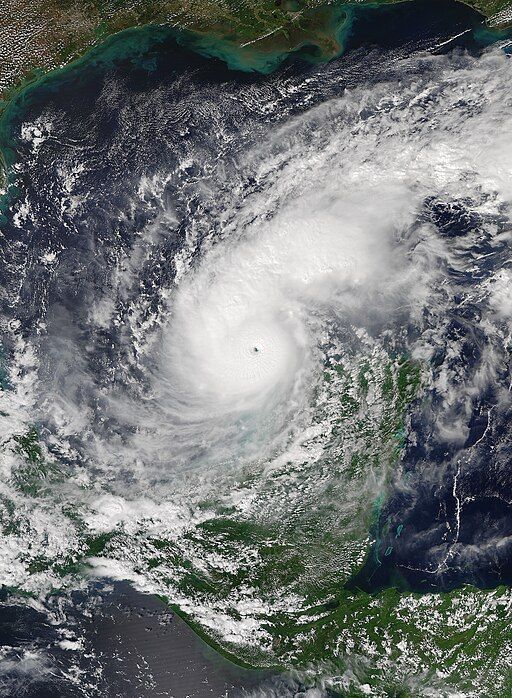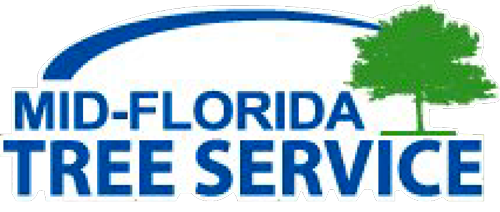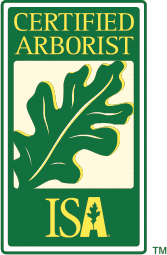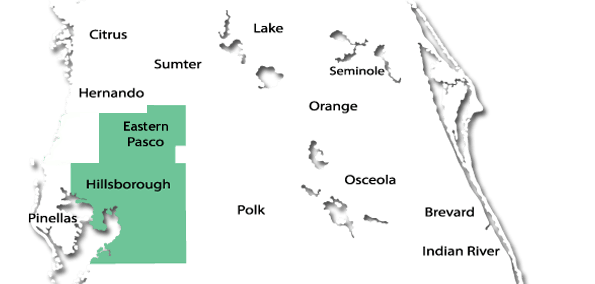Mid-Florida Tree Service, Inc Blog
At Mid Florida Tree Service, we know that successful tree planting in Florida goes far beyond simply picking the right tree. The long-term health, safety, and beauty of your landscape depend just as much on how you prepare your property as on which species you select. Whether you're planting shade trees in Wesley Chapel or adding ornamental trees in Riverview, proper planning makes all the difference. Site Assessment: Understanding Your Space Before a single tree goes in the ground, it's crucial to evaluate your landscape. Our certified arborists assess key factors such as soil composition , drainage patterns , sunlight exposure , and nearby structures or utility lines . Planting a tree too close to your house, power lines, or septic system can lead to expensive problems down the road. We help homeowners make informed choices about where trees should be planted to minimize future risk and maximize long-term health. Think Ahead: Spacing and Growth Potential A young tree may seem like a modest addition to your yard, but in a few years, its roots and canopy can stretch far beyond your original expectations . We help clients choose appropriate spacing based on each tree’s mature size and shape. This not only protects your home and hardscaping but also promotes proper air circulation and root development. Proper spacing also reduces competition between trees for water and nutrients. Preparing the Soil for Success Florida soil varies greatly — from sandy soils in coastal areas to heavy clay inland. Our team analyzes your soil and may recommend amendments or deep root conditioning to promote strong root establishment. For compacted soil, especially in newer developments or construction zones, we offer solutions to loosen the ground, allowing roots to spread freely and absorb nutrients effectively. Planning for Storm Resilience In Florida, storms are a fact of life. That’s why we emphasize wind resistance and strategic placement when planning your tree layout. By selecting the right location and pruning early for strong structure, you can drastically reduce the likelihood of tree failure during hurricanes or tropical storms. Trust Our Team to Help You Plant with Confidence At Mid Florida Tree Service, we don’t just trim and remove trees — we help homeowners and property managers build smarter landscapes from the ground up. If you're planning new tree installations or reworking your yard, contact us today. We’ll help you lay the groundwork for healthy, beautiful, and storm-resilient trees that thrive for decades to come.
At Mid Florida Tree Service, we believe that healthy trees begin with proactive care—and that starts with seasonal tree inspections . Florida’s unique subtropical climate, frequent rain, and severe storm seasons make it essential to keep a close eye on the condition of your trees throughout the year. Our certified arborists help homeowners and property managers across Hillsborough and Pasco counties stay ahead of potential problems with timely, professional evaluations. Why Seasonal Inspections Matter While many tree issues develop slowly, others can become urgent seemingly overnight. Seasonal inspections allow us to identify problems early—before they result in costly property damage or the loss of a valuable tree. During these check-ups, our arborists look for signs of disease, decay, structural weakness, storm damage, pest infestations, and more. Each season presents its own challenges: Spring brings new growth—and with it, the opportunity to spot irregularities in leaves, branches, and bark. It's also the time to plan structural pruning before the full heat of summer. Summer means storms. We evaluate trees for weak limbs, overgrowth, or imbalanced canopies that could lead to breakage during high winds. Fall is ideal for preparing trees for the dormant period and catching early signs of root rot or fungal infections, which often intensify with Florida’s damp conditions. Winter , while milder in Florida, can stress trees through dry spells or rare freezes. We assess for any lingering damage from hurricane season and recommend deep root feeding or corrective pruning. What We Look For Our inspection process is thorough. When one of our certified arborists visits your property, they will: Check for dead or hanging limbs that may fall without warning. Examine trunks for signs of decay , cracks, or fungal growth. Inspect root zones for soil compaction , pooling water, or root damage. Assess the tree’s overall structure , including codominant stems, weak unions, or overextended branches. Look for insect activity or diseases like sooty mold, anthracnose, or signs of citrus greening in fruit trees. These observations help us determine whether your trees need trimming, cabling, fertilization, or—in worst cases—removal. Proactive Care Saves Money and Trees The cost of preventing a problem is nearly always less than the cost of responding to an emergency. Seasonal inspections can help you avoid: Emergency tree removal after a storm Insurance claims due to falling limbs or uprooted trees Costly damage to homes, vehicles, fences, or utility lines Just as important, these check-ups extend the health and lifespan of your trees —preserving the investment you’ve made in your landscape and property. Trust the Experts Mid Florida Tree Service has proudly served Central Florida communities for over four decades. We’re family-owned, fully insured, and home to Certified Arborists who understand the tree species, soil types, and climate conditions unique to this region. Our team is ready to tailor a seasonal inspection plan that fits your property and your goals. Whether you’re preparing for hurricane season, recovering from a dry spell, or simply want peace of mind, we’re here to help. 📞 Call Mid Florida Tree Service today at 813-588-0315 to schedule your seasonal tree inspection.
From the professionals at Mid Florida Tree Service
Some trees grow strong and straight all on their own. Others, whether due to genetics, weather damage, or structural weaknesses, need a little help to stay upright and safe. That’s where cabling and bracing come in—two methods our team at Mid Florida Tree Service uses to support and stabilize trees that may be at risk of failure. Understanding the Difference: Cabling vs. Bracing Cabling involves installing high-strength steel cables between major limbs or trunks in the upper canopy of a tree. The goal is to reduce movement and redistribute structural stress more evenly. Cabling is considered minimally invasive , as the hardware is attached externally and doesn’t penetrate deep into the wood. Bracing , on the other hand, is a more invasive technique. It involves drilling into the trunk or limbs and inserting rods or bolts to hold parts of the tree together. This is typically done when there’s a visible split or a risk of the tree cracking further. Bracing provides rigid support and prevents catastrophic limb or trunk failure. Both methods are used in conjunction with each other when appropriate, and both require an in-depth understanding of tree biology and mechanical stress. When Are These Techniques Needed? You might need cabling or bracing if: Your tree has codominant trunks (two large stems growing from the same point). There’s a visible crack or split in the trunk or major limb. The tree is leaning or showing signs of instability. You have a heritage or high-value tree you’d like to preserve rather than remove. You’re seeing excessive swaying or limb movement during high winds. Why Experience Matters Because bracing involves drilling into living wood, it must be done precisely to avoid introducing decay or compromising the tree’s vascular system. Improper installation can do more harm than good. At Mid Florida Tree Service , our Certified Arborists evaluate each tree individually to determine whether support systems like cables and braces are appropriate. We follow industry best practices and use only professional-grade materials designed for long-term performance. We Help Trees Stay Safe and Standing Tree cabling and bracing are not quick fixes—they’re long-term structural supports that need routine inspection and maintenance. If your tree has a weak branch union, a trunk that’s starting to split, or other structural concerns, we’re here to help you explore your options. Let our experts assess the situation and recommend the best course of action to keep your trees healthy and your property safe. 📞 Call Mid Florida Tree Service at (813) 588-0315 Proudly serving Tampa, Thonotosassa, Zephyrhills, Wesley Chapel, and beyond.

At Mid Florida Tree Service, we understand how quickly Florida’s weather can turn dangerous. With hurricane season and summer storms arriving every year, one of the smartest things homeowners and property managers can do is proactively identify hazardous trees before the winds start howling. Our certified arborists have been serving Hillsborough and Pasco counties for over four decades, and we’ve seen the damage that neglected trees can cause—broken limbs through roofs, downed trees blocking driveways, and dangerous power line entanglements. Fortunately, many of these issues can be prevented with a proper tree inspection and timely maintenance. Warning Signs That a Tree May Be Hazardous Not every dangerous tree looks like it’s about to fall. Some warning signs can be subtle but serious: Leaning Trees: A tree that’s tilting more than usual may have compromised roots or soil erosion at its base. Dead or Hanging Limbs: Branches that are already dead or dying are more likely to break during high winds. Cracks or Splits in the Trunk: These are structural red flags that may indicate internal decay or previous storm damage. Fungal Growth at the Base: Fungi, such as mushrooms or bracket fungus, may point to root rot or decay within the trunk. Heaving Soil Around the Roots: Soil that appears lifted around a tree’s base may suggest shifting or failing roots. If you notice any of these signs, it’s time to contact a professional tree service company like ours for a risk assessment. Why Early Tree Inspections Matter Florida's storm season doesn't give much warning. Trees that appear stable in calm weather can quickly become a serious threat once the winds pick up. By scheduling a pre-season tree inspection, you gain peace of mind and reduce the likelihood of: Emergency tree removal Property damage from falling limbs or uprooted trunks Injuries to family members, visitors, or neighbors Costly insurance claims or disputes At Mid Florida Tree Service, we use professional equipment and years of expertise to assess your trees and recommend pruning, cabling, or removal only when necessary. Trust a Certified Arborist Our team includes Certified Arborists who understand Florida’s trees—from native Live Oaks and Cabbage Palms to ornamental imports. We follow industry best practices to keep your trees healthy, balanced, and safe. If your city or HOA requires documentation for protected trees, we can provide the proper reports and permits, too. Schedule a Storm Safety Inspection Today If you live in Thonotosassa, Tampa, Seffner, Wesley Chapel, or anywhere in Hillsborough or eastern Pasco County, give Mid Florida Tree Service a call at 813-588-0315 . We’ll help you spot trouble before the storm hits—and we’ll work with you to make sure your trees are an asset, not a liability.
Planting trees is one of the best ways Florida homeowners can enhance their landscapes while improving air quality, providing shade, and supporting local ecosystems. However, successful tree planting requires careful selection, proper placement, and ongoing maintenance to ensure long-term health. Here are some essential tree planting tips to help homeowners in Florida establish strong, thriving trees. 1. Choose the Right Tree for Your Location Selecting a tree species suited to Florida’s climate and soil conditions is crucial. Native trees such as Live Oak, Bald Cypress, and Southern Magnolia thrive in Florida’s environment with minimal maintenance. Consider factors like sunlight, moisture levels, and space availability before choosing a tree. 2. Select an Ideal Planting Site Proper placement ensures the tree’s longevity and prevents potential issues. When selecting a planting site: Avoid placing trees too close to structures, driveways, or power lines. Choose a location with appropriate sunlight exposure based on the tree species. Ensure adequate spacing from other trees and plants to allow for proper growth. 3. Prepare the Soil Properly Healthy soil is vital for tree growth. Florida’s sandy soil may require soil amendments, such as compost or organic matter, to improve nutrient content and moisture retention. Conducting a soil test can help determine if additional nutrients or pH adjustments are needed. 4. Dig the Correct-Sized Hole Digging a proper hole is key to root establishment. The hole should be: Twice as wide as the tree’s root ball to encourage outward root growth. No deeper than the root ball’s height to prevent sinking and root suffocation. 5. Plant at the Right Depth Planting too deep or too shallow can harm the tree. The top of the root ball should be level with or slightly above the surrounding soil. Avoid covering the trunk base with soil, as this can cause rot and pest issues. 6. Water Properly Newly planted trees need consistent watering, especially in Florida’s hot climate. Follow these watering guidelines: Water deeply but infrequently to encourage deep root growth. Use a slow-drip system or soaker hose to prevent runoff and ensure even absorption. Reduce watering frequency once the tree is established, usually after the first year. 7. Apply Mulch for Moisture Retention Mulching helps retain moisture, regulate soil temperature, and suppress weeds. Use organic mulch like wood chips or pine bark, and apply it in a 2-3 inch layer around the tree base. Keep mulch a few inches away from the trunk to prevent rot and pest infestations. 8. Stake Only If Necessary Most young trees do not require staking unless they are in a windy location or have weak root systems. If staking is needed: Use flexible ties to allow slight movement, promoting stronger roots. Remove stakes after one year to prevent girdling and encourage natural stability. 9. Prune Sparingly in the First Year Minimal pruning is recommended during the first year to avoid stressing the tree. Only remove dead or damaged branches. After establishment, regular pruning will help maintain the tree’s shape and health. 10. Monitor for Pests and Diseases Florida’s warm climate makes trees susceptible to pests and diseases. Regularly inspect your trees for signs of stress, discoloration, or insect infestations. If issues arise, consider using eco-friendly treatments or consulting a professional tree service. Conclusion Proper tree planting and care can lead to a healthy and resilient landscape. By selecting suitable tree species, ensuring correct planting techniques, and providing ongoing maintenance, Florida homeowners can enjoy the benefits of beautiful, strong trees for years to come. For expert advice and professional tree care services, consider contacting Mid Florida Tree Service to help with all your tree planting and maintenance needs.
Florida’s diverse and lush landscape is home to a variety of trees that enhance the beauty of residential properties while providing shade, improving air quality, and supporting local ecosystems. However, proper tree care requires an environmentally conscious approach to ensure the health of trees and the surrounding environment. By adopting sustainable tree care practices, Florida homeowners can maintain thriving landscapes while minimizing negative ecological impacts. 1. Choose Native and Drought-Resistant Trees Planting native tree species, such as Live Oaks, Bald Cypress, and Southern Magnolias, helps create a resilient landscape. Native trees are well-adapted to Florida’s climate, requiring less water and fewer chemical treatments compared to non-native species. Drought-resistant trees also reduce the need for excessive irrigation, conserving water resources. 2. Practice Proper Mulching Mulching around the base of trees retains soil moisture, regulates temperature, and reduces weed competition. Organic mulch, such as wood chips or pine straw, provides nutrients as it decomposes. However, avoid piling mulch directly against the trunk, as this can encourage rot and pest infestations. 3. Use Water-Efficient Irrigation Techniques Overwatering can lead to root rot and weaken trees. Instead, implement deep but infrequent watering to encourage deep root growth. Drip irrigation and soaker hoses are excellent options for delivering water efficiently while reducing runoff and evaporation. 4. Avoid Harmful Chemical Treatments Pesticides and herbicides can harm beneficial insects and disrupt the local ecosystem. Instead, opt for integrated pest management (IPM), which includes natural predators, beneficial fungi, and organic treatments to control pests and diseases in a sustainable way. 5. Prune Thoughtfully and Strategically Regular pruning helps maintain tree health, but excessive trimming can stress the tree. Focus on removing dead or diseased branches, and avoid cutting more than 25% of the tree’s canopy at one time. Sustainable pruning methods also help trees withstand Florida’s frequent storms and high winds. 6. Recycle Yard Waste Rather than disposing of leaves, branches, and tree clippings, use them for composting or as mulch. This reduces landfill waste and returns valuable nutrients to the soil, promoting a healthier landscape. 7. Support Local Wildlife Trees serve as habitats for birds, pollinators, and other wildlife. Consider planting fruit-bearing or flowering trees, such as Red Maples or Dahoon Hollies, to support biodiversity while enhancing your landscape. Leaving some dead wood in less conspicuous areas can also provide shelter for beneficial insects and small animals. 8. Plan for Storm Preparedness Florida’s hurricane season poses risks to trees, making storm preparation a key aspect of sustainable care. Regularly inspect trees for weak limbs, decay, or structural issues. When planting new trees, space them properly and avoid planting too close to buildings or power lines. Conclusion By implementing sustainable tree care practices, Florida homeowners can ensure their trees remain healthy while benefiting the environment. Choosing native species, using eco-friendly maintenance techniques, and preparing for extreme weather are all steps toward a greener and more resilient landscape. Mid Florida Tree Service is committed to providing expert guidance and services to help homeowners maintain beautiful and sustainable tree canopies.
Trees add beauty, shade, and environmental benefits to any property, but they can also become hazards if not properly maintained. Recognizing the signs of a dangerous tree can help prevent property damage, injury, and costly emergencies. Understanding how to identify and address hazardous trees is essential for every property owner. Signs of a Hazardous Tree Certain signs indicate a tree may pose a risk to its surroundings. Here are key warning signs to look for: Leaning Trees – While some trees naturally grow at an angle, a sudden or severe lean may indicate root instability or structural weakness. Cracks and Splits – Deep cracks in the trunk or major limbs can signal internal decay and structural failure. Dead or Hanging Branches – Large, dead branches can break and fall unexpectedly, posing a risk to people and property. Decay and Fungi Growth – Mushrooms or fungal growth at the base of a tree can be a sign of internal decay. Root Damage – Construction, soil compaction, or disease can weaken roots, making trees more likely to topple. Cavities and Hollow Trunks – Large hollow areas can compromise a tree’s stability and strength. Assessing Tree Stability and Risk If you notice any of the above signs, it’s important to assess the severity of the issue. Consider: The location of the tree and what it might fall on (home, driveway, power lines, etc.). The extent of damage or decay present. Weather conditions that may increase the likelihood of failure, such as high winds or heavy rain. Steps to Take if a Tree is a Danger If you suspect a tree is hazardous, take action promptly: Monitor the Tree – If the signs of risk are minimal, keep an eye on it for further deterioration. Prune or Trim Hazardous Branches – Removing dead or weak limbs can reduce the risk of falling debris. Support Weak Trees – In some cases, cabling and bracing can provide additional support to a weakened tree. Consult a Professional Arborist – If you’re unsure about the tree’s condition, a certified arborist can assess and recommend the best course of action. Remove the Tree if Necessary – If a tree is beyond saving and poses a significant threat, professional tree removal may be the safest option. The Importance of Professional Assessment A certified arborist has the expertise to properly evaluate tree health and risks. They can provide solutions such as pruning, disease treatment, and safe tree removal if needed. Never attempt to remove a large or hazardous tree on your own, as improper removal can lead to injury and property damage. Conclusion Recognizing and addressing hazardous trees is crucial for maintaining a safe and beautiful property. Regular inspections and professional care can prevent accidents and extend the life of your trees. If you suspect a tree on your property is a risk, don’t wait—contact a professional tree service to ensure safety and peace of mind.
Mulching is a simple yet highly effective practice that plays a crucial role in maintaining tree health. By applying a protective layer of organic or inorganic material around the base of a tree, mulching provides numerous benefits that contribute to the tree’s overall well-being. Understanding the importance of mulching and how to do it correctly can help homeowners and property managers ensure the longevity and vitality of their trees. Benefits of Mulching Moisture Retention One of the primary benefits of mulching is its ability to retain soil moisture. By reducing evaporation, mulch helps keep the root zone hydrated, especially during Florida’s hot and dry seasons. Temperature Regulation Mulch acts as an insulating layer, helping to regulate soil temperatures. It keeps roots cooler in the summer and warmer in the winter, providing a more stable environment for tree growth. Weed Suppression A properly applied layer of mulch can inhibit weed growth, reducing competition for water and nutrients. This is particularly important for young trees that need as many resources as possible to establish strong root systems. Soil Improvement Organic mulches, such as wood chips or shredded bark, gradually decompose and enrich the soil with nutrients. This enhances soil structure, promotes microbial activity, and supports overall tree health. Erosion Control Mulching helps prevent soil erosion by minimizing the impact of heavy rain and wind. This is particularly beneficial in Florida, where storms and heavy rains are common. Protection from Mechanical Damage A well-maintained mulch ring around a tree can act as a barrier against lawnmowers, weed trimmers, and foot traffic, preventing damage to the trunk and root system. Best Practices for Mulching Choose the Right Mulch : Organic options like pine bark, wood chips, or leaves are recommended as they break down and improve soil health over time. Apply the Correct Depth : A mulch layer of 2-4 inches is ideal. Too much mulch can suffocate roots and lead to excess moisture retention, which may encourage disease. Keep Mulch Away from the Trunk : Avoid piling mulch against the trunk, as this can create a moist environment that promotes rot and invites pests. Maintain a gap of several inches around the tree base. Refresh Mulch Periodically : Over time, organic mulch decomposes and needs replenishment. Check mulch levels regularly and add more as needed while maintaining the appropriate depth. Common Mulching Mistakes to Avoid Volcano Mulching : This refers to piling mulch high against the tree trunk, which can lead to rot, pests, and disease. Using Inappropriate Materials : Non-porous materials like plastic or rubber can prevent water infiltration and hinder root development. Applying Too Much Mulch : Excessive mulch can suffocate tree roots and promote fungal growth. Conclusion Mulching is a simple yet effective way to support tree health, conserve moisture, regulate soil temperature, and prevent weeds and erosion. By following proper mulching techniques, homeowners and property managers can create a healthier and more sustainable environment for their trees. Whether you are caring for a newly planted tree or maintaining mature specimens, incorporating mulch into your tree care routine is a valuable investment in their longevity and vitality.








Share On: